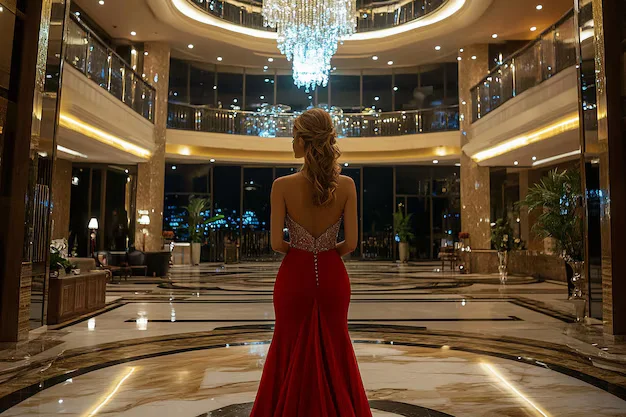Lighting is both a practical and a decorative feature in large, open spaces. The lighting you choose can greatly alter the atmosphere and visual impact of a space, particularly in vast rooms, vaulted ceilings, or majestic entryways. Traditional crystal chandeliers are commonly used in such sumptuous settings, but there are numerous different lighting solutions that can produce a spectacular impact. This video will show you how to select large lighting fixtures that complement the architecture of your room, resulting in a beautiful and cohesive atmosphere.
Understand the Scale of Your Space
Before making any lighting purchases, you must first determine the proportions of the room. A large fixture may overshadow the room’s décor, while a small fixture may appear out of place. Large rooms with high ceilings demand equally impressive lighting fixtures, and exact measurement will help ensure that the lighting does not blend in with the room’s overall design or become lost.
Take into mind the ceiling height as well. For example, a large pendant light or chandelier should be hung at a height that is both visually noticeable and provides adequate clearance. Taller ceilings may allow for more dramatic installation heights, but the bottom of the fixture should be at least 7 feet above the floor in living rooms.
Focus on Statement Lighting
Lighting should be the focal point in large spaces. Crystal chandeliers, contemporary pendant lights, and even sculptured ceiling lights are examples of large lighting fixtures that draw attention and set the tone for a room. When strategically positioned above a dining table, in a foyer, or in a location with a vaulted ceiling, these statement pieces have the ability to become the room’s focal point.
Choose a light fixture that complements the room’s style. If there is traditional architecture in the region, consider classic designs with exquisite details and luxurious materials. Conversely, if the decor is modern, use sleek, understated fixtures that add style without being overly ornate.
Embrace Layered Lighting for Depth
Adding layering different types of lighting in a high ceiling room will give depth and warmth. It may not have enough illumination or texture in the space if it is lit only by overhead lighting. By combining ambient, task, and accent lighting you can balance out your space.
Do not forget to complete your main chandelier or pendant with the range of accompanied fixtures such as recessed lights, wall sconces and floor lamps. Ambient lighting creates a soothing ambiance while accent lighting focuses on architectural highlights or artwork. Task illumination is needed for many occupations, such as reading and cooking.
Consider the Shape and Design
Take into account the shape of the fixture in relation to the space of the room when choosing it. In a square or rectangular room, a circular chandelier can help soften sharp corners, and linear or rectangular fixtures can work well in elongated spaces, like a dining area or large living room.
Multi tiered chandeliers are more dramatic options that can fill a large void in the center of a room, especially if the ceiling is vaulted or cathedral. Artistic lighting pieces that are sculptural can also provide visual interest, and both form and function to your space.
Keep Lighting Proportions in Mind
If you have a large space, adjust the proportion of your lighting fixture so that it’s balanced. In open concept layouts, larger fixtures are best for filling the space and preventing the lighting from looking dwarfed. But the size should never take over the entire room — an oversized fixture should enhance the other factors of your décor, instead of fighting a battle with it.
Larger fixtures typically fare better in the center of the room or above a dining table or entryway, one of the key visual balance tricks. Make sure the scale of the lighting complements other surrounding furniture and keep the visual flow harmonious all throughout the space.
Match Lighting to Room Function
Large spaces can have multiple uses, but each function may need its own type of lighting. For instance, a living room might call for a bright and welcoming fixture for entertaining purposes, whereas a bedroom or a reading nook would appreciate softer lights to set the mood. To best optimize both function and style, be sure to match the lighting to what will happen in the room.
Final Thoughts
The trick to picking the best lighting for large spaces and high ceilings calls for understanding the scale of your room, choosing statement fixtures suited to the architectural style, and finding ways to vary the lighting and control it. Modern sculptural pendants or elegant crystal chandeliers can transform a room completely when you use the right lighting.







